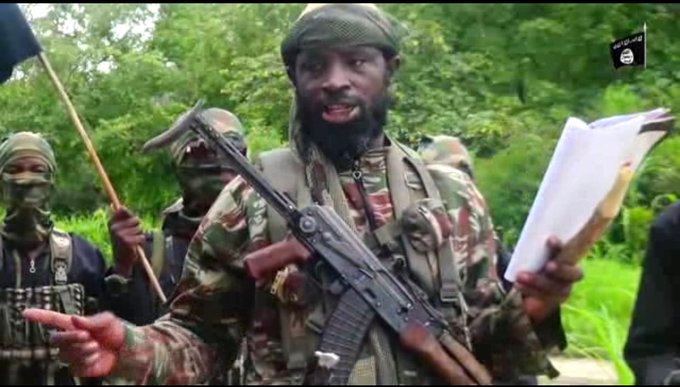Boko Haram chief ‘badly wounded’: What we know
In the 12 years since Nigeria’s jihadist insurgency erupted in the northeast, Boko Haram leader Abubakar Shekau has been reported dead several times, only to reappear. On Wednesday, intelligence sources say, rival Islamic State-allied jihadists launched an attack on Shekau’s faction in their stronghold in the Sambisa forest in Borno State. Security: Where Are The […]

In the 12 years since Nigeria’s jihadist insurgency erupted in the northeast, Boko Haram leader Abubakar Shekau has been reported dead several times, only to reappear.
On Wednesday, intelligence sources say, rival Islamic State-allied jihadists launched an attack on Shekau’s faction in their stronghold in the Sambisa forest in Borno State.
Shekau was seriously wounded after trying to kill himself to evade capture by the IS jihadists who surrounded him after a series of battles, the sources said.
Nigerian media was filled with speculation that the man who made international headlines for kidnapping nearly 300 schoolgirls in 2014 might finally be dead.
But 24 hours after the news broke, the army was still investigating and details about what happened and where Shekau may be remain unclear.
Here is what we know
Who are the factions?
More than 40,000 people have been killed and over two million displaced from their homes by the conflict in northeast Nigeria since 2009, and fighting has spread to parts of neighbouring Chad, Cameroon and Niger.
Since 2016, two rival factions emerged from the Boko Haram movement after disagreements over Shekau’s indiscriminate attacks on Muslim civilians and the use of children and women as suicide bombers.
On one side, Shekau’s Boko Haram faction, known formally as Jama’tu Ahlis Sunna Lidda’awati wal-Jihad or JAS, was based in the Sambisa forest.
It also operates in the far northern border of neighbouring Cameroon as well as frontier areas of Chad and Niger.
The other was Islamic State in West Africa Province or ISWAP with its stronghold in Alagarno forest and areas of Lake Chad, a vast body of water with scattered islands.
Both groups target Nigeria’s armed forces and those from states bordering northeast Nigeria. But sporadic clashes have also erupted between the two factions over influence and territory.
According to the local intelligence sources, a new round of infighting erupted in April during the Muslim holy month of Ramadan.
Boko Haram fighters ambushed an ISWAP brigade as they transported weapons to one of their main camps, sources said. Several ISWAP men were killed.
In retaliation, ISWAP launched an attack on a Boko Haram camp located on Lake Chad. Both sides suffered losses. But, the sources said, ISWAP took the fight to Boko Haram directly in Sambisa forest located further south.
What happened in Sambisa?
According to details from two intelligence sources, on Monday a convoy of ISWAP trucks mounted with machine guns entered the Sambisa forest area.
One group headed directly to the Boko Haram camp in Sabilul Huda, where Shekau had sought refuge. His faction had recently been weakened by airstrikes by the military.
ISWAP fighters managed to neutralise his guards and surrounded the house where Shekau had been holed up, the sources said.
What happened next is not fully clear, but Shekau was seriously wounded when he tried to kill himself to avoid being taken alive.
Intelligence sources said Shekau shot himself in the chest and was later rescued unconscious by some of his men and taken to an unknown location.
“The truth is he may hardly survive his wounds,” one source said.
Dead or wounded?
If sources are unclear about whether Shekau survived, the jihadist commander has surprised analysts before after multiple reports of his death over the years.
The Nigerian army spokesman could not confirm any of the details and said an investigation was still ongoing.
Neither ISWAP nor Boko Haram has released any communique about the attack on Sambisa or the whereabouts of Shekau.
What happens next?
Whether he is seriously wounded or dead, the loss of Shekau would be a huge blow to his Boko Haram faction where he was a central figure for years, analysts said.
ISWAP had already become the more dominant force in Nigeria’s northeast showing its capacity to carry out complex attacks on the armed forces.
Its fighters have recently overrun several army bases.
Taking Shekau’s Sambisa forest stronghold would allow ISWAP to consolidate territory it already holds in Alagarno forest and southern Lake Chad, potentially allowing the group to control roads leading to the Borno state capital Maiduguri.
While some pro-Shekau brigades along the Cameroon border and in Niger and Chad may want autonomy, ISWAP may now access a pool of Shekau’s fighters and a partial reunification may be in the works, said Vincent Foucher, a fellow at French National Centre for Science Research.
“Surely it is under discussion, all these guys are connected, they know each other and there must be negotiations going on.
“There are still some unknowns but what is clear is that it is a big win for ISWAP,” he said.
“A lot of people are happy to see Shekau dead, but it is not very good news if ISWAP becomes the single jihadist force in the area.” (AFP)
